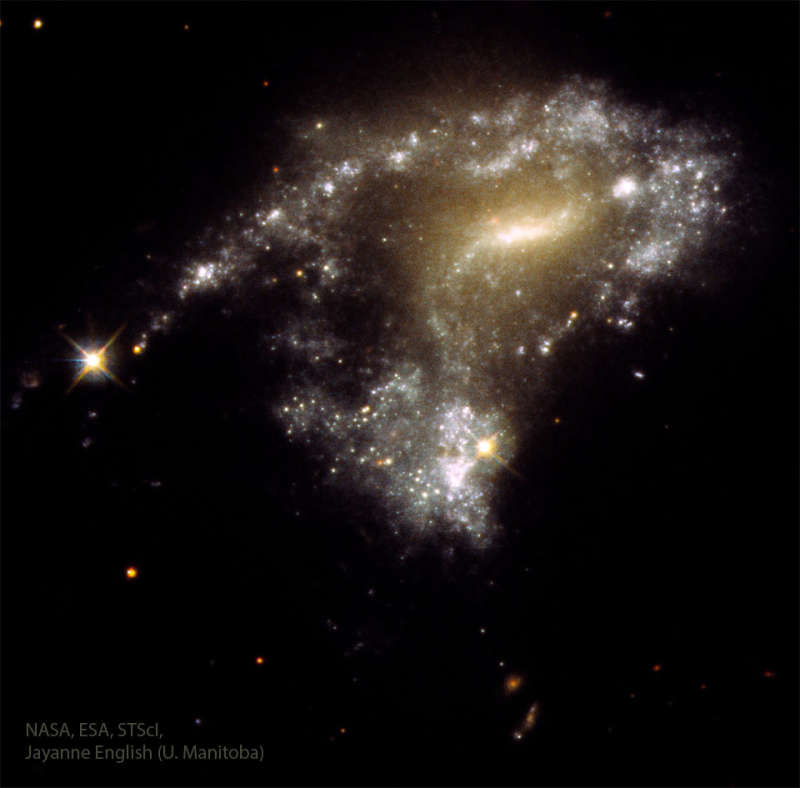Credit & Copyright: NASA,
ESA,
STScI;
Processing:
J. English
(U. Manitoba);
Science: M. Rodruck
(Penn State U. &
Randolph-Macon C.)
et al.;
Text: Jayanne English (U. Manitoba).
Explanation:
When galaxies collide, how many stars are born?
For AM1054-325,
featured here in a recently released image by the
Hubble Space Telescope, the answer is millions.
Instead of stars
being destroyed
as galaxy AM1054-325 and a nearby galaxy
circle each other,
their gravity and motion has
ignited stellar creation.
Star formation occurs rapidly in the gaseous debris stretching from
AM1054-325Bs yellowish body due to the other galaxyBs gravitational pull.
Hydrogen gas surrounding newborn
stars glows pink.
Bright infant
stars
shine blue
and cluster together in compact nurseries of thousands to
millions of stars.
AM1054-325 possesses over 100 of these intense-blue,
dot-like star clusters, some appearing like a
string
of
pearls.
Analyzing
ultraviolet light helped determine that most of these stars are less than 10
million years old:
stellar
babies.
Many of these nurseries may grow up to be
globular star clusters, while the bundle of young stars
at the bottom tip may even
detach and form a small galaxy.
Text: Jayanne English (U. Manitoba).
1999 2000 2001 2002 2003 2004 2005 2006 2007 2008 2009 2010 2011 2012 2013 2014 2015 2016 2017 2018 2019 2020 2021 2022 2023 2024 2025 |
Yanvar' Fevral' Mart Aprel' Mai Iyun' Iyul' Avgust Sentyabr' Oktyabr' Noyabr' Dekabr' |
NASA Web Site Statements, Warnings, and Disclaimers
NASA Official: Jay Norris. Specific rights apply.
A service of: LHEA at NASA / GSFC
& Michigan Tech. U.
|
Publikacii s klyuchevymi slovami:
galactic collision - stalkivayushiesya galaktiki
Publikacii so slovami: galactic collision - stalkivayushiesya galaktiki | |
Sm. takzhe:
Vse publikacii na tu zhe temu >> | |
